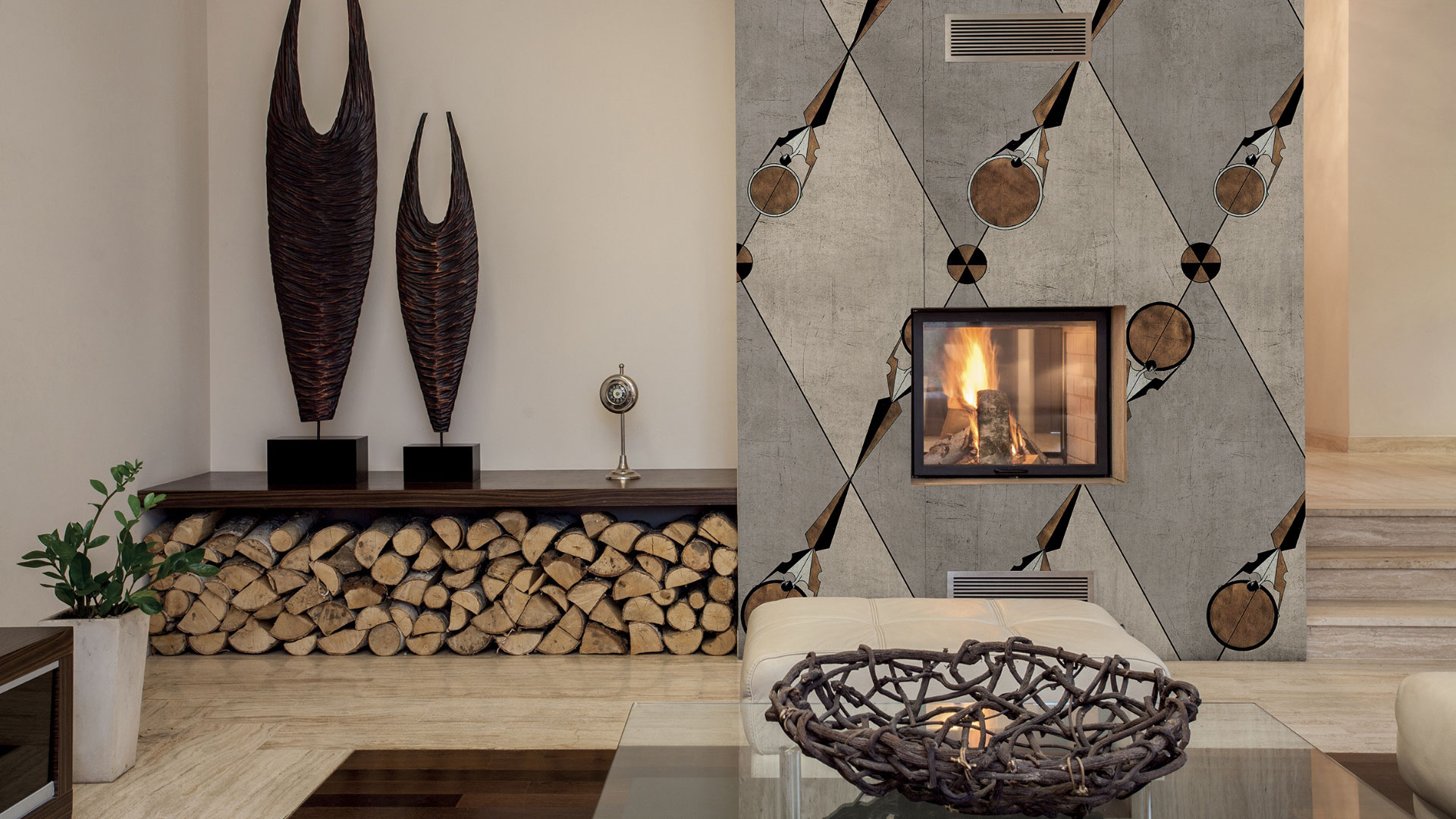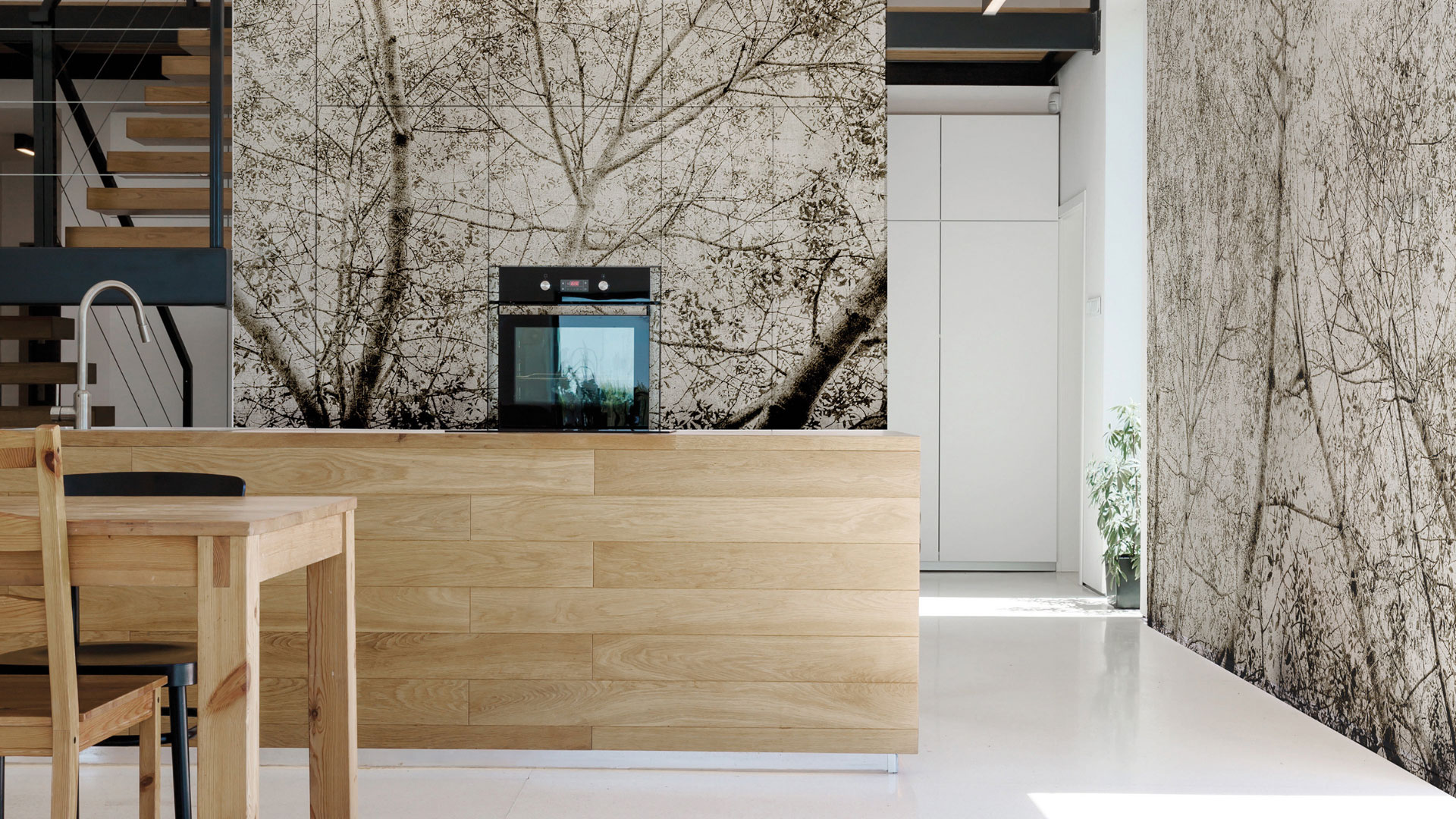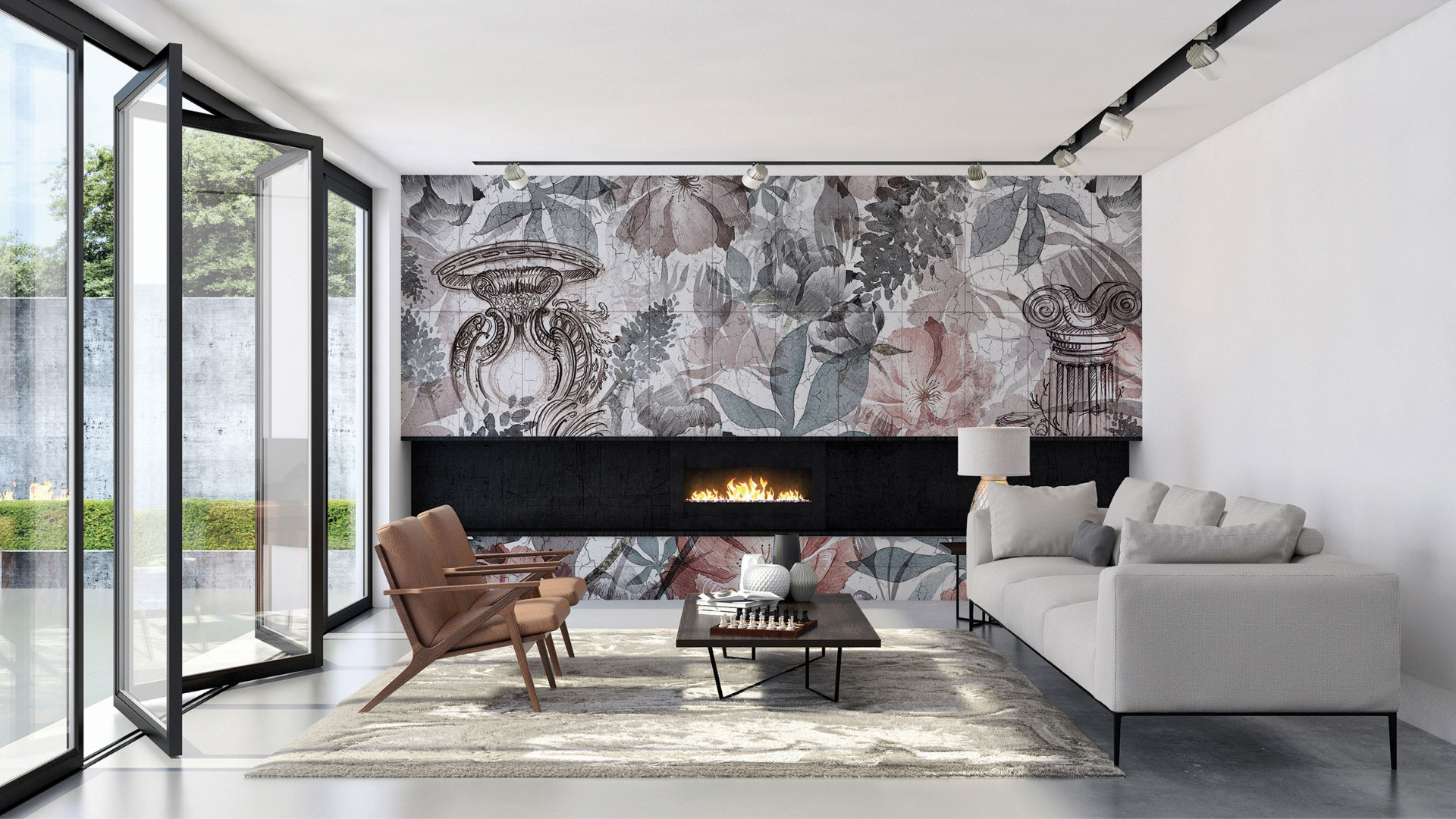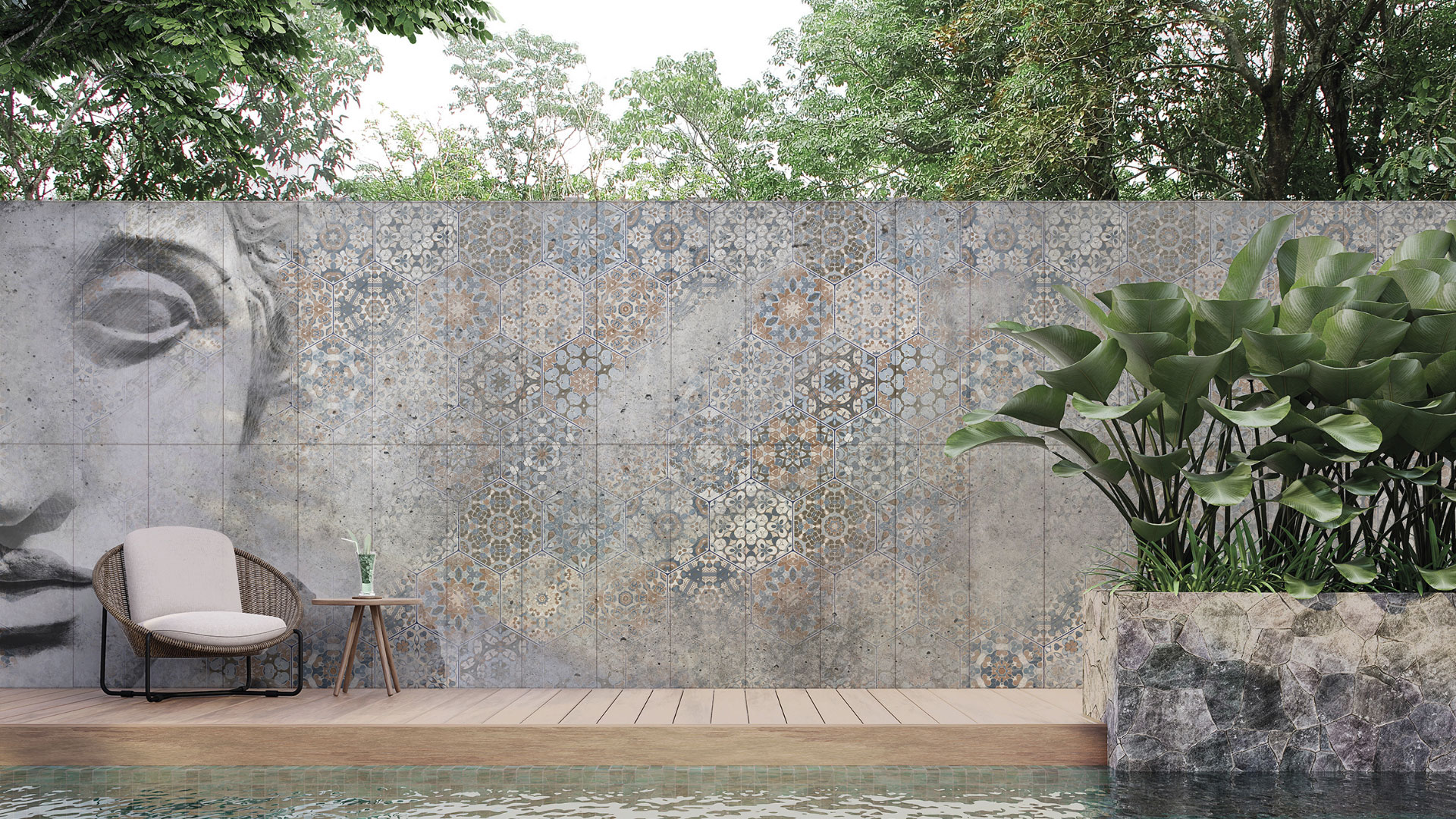
Il porcelain stoneware ha technical features and aesthetics that make it suitable for covering the walls and floors of private homes and commercial spaces. It derives from specific manufacturing processes and is increasingly in demand in the design and furnishing sector.
we at Momenti we associate decorations and graphics with excellent quality materials. In our business, porcelain stoneware is transformed into the canvas that gives the beauty of a painting. In the article, we talk about which features distinguish it and make it a precious resource.
What is porcelain stoneware?
Il porcelain stoneware it belongs to the macro category of ceramics and is used to obtain coatings that resist wear and humidity over time. Ceramic is a material that we know well because it is part of everyday life: it is used in furnishings and to make everyday objects, such as vases and plates. As a type of ceramic material, porcelain stoneware stands out because it is made with a compact and hard, non-porous and colored paste. The procedure that leads to obtaining it gives it a high degree of mechanical strength.

The etymology of "gres" and greification
“Gres” comes from the French word “grès” which means “sandstone” or “gravel”. From the same word of French-speaking origin, pronounced without the final "s",gre>, linguistically it also derives from "greification", the term with which the process that leads to obtaining stoneware is identified.
La greification it is the phenomenon that occurs just before the melting in the firing of ceramic materials. It consists of a particular welding between granules which leads to a considerable increase in mechanical resistance and impermeability. The expression "point of vitrification" refers to the minimum temperature at which the process begins. A ceramic is generally vitrified at a temperature between 1150 and 1300 °C.
The feldspars
Porcelain stoneware is obtained by mixing clay and feldspar with kaolin and quartz. Feldspars are very common minerals used in the production of glass and ceramics. They behave like a flux and allow to decrease the temperature of the manufacturing processes.

Characteristics of porcelain stoneware
Let's get into the merits of characteristics of porcelain stoneware. Its appearance is similar to that of porcelain, as the name suggests. But there is much more.
The surfaces of the porcelain stoneware coverings are easy to clean and wear resistant. They are real barriers scratchproof. They do not show abrasions, streaks, scratches following mechanical stresses of sliding friction or sliding.
Porcelain stoneware is not affected by the action of corrosive substances and high temperatures. It keeps its chromatic characteristics unchanged over time and is also perfect for outdoor environments of the house or commercial space.
What is the difference between stoneware and porcelain stoneware?
The first type of stoneware to be produced in the distant XNUMXs was not porcelain, but what is called "red". Today the red stoneware represents a niche production, reserved for small-sized tiles. In fact, despite having excellent mechanical resistance qualities, red stoneware required a production process that was not suitable for large-sized tiles because the material tends to deform.
The porcelain stoneware we know today, highly appreciated for coverings, has almost nothing in common with the old red stoneware. The only feature that unites them is that both have no enamelling. The color of the coating is present in the paste used to make the tiles. This fact determines a great advantage for floor and wall coverings: if a tile chips, the imperfection does not catch the eye because the inside of the tile has the same color as the surface.
Ceramic and porcelain stoneware: two different worlds
Porcelain stoneware is classified as ceramic material. But what are the differences between real ceramic and the material that stands out for its resistance and durability in the coatings sector?
The fundamental difference between the two materials lies in the production process. The ceramic is subjected to a single firing, or to two phases of firing, with a temperature of 900 °C. Porcelain stoneware is fired at higher temperatures and also undergoes the operation of pressing. The two processes ensure that the material acquires its typical characteristics of resistance and impermeability.
The characteristics of ceramic and porcelain stoneware depend on the two different procedures. The former is subject to breakage following impacts and abrasions. The second, on the other hand, resists well to knocks, scratches, erosions, and has an almost unlimited duration over time.

How resistant is porcelain stoneware?
Porcelain stoneware is suitable for covering both surfaces of internal spaces and external surfacesexposed to atmospheric agents. In fact, it guarantees excellent resistance to abrasions and scratches, i.e. to deterioration caused by contact. It resists trampling and even blows inflicted by heavy objects.
In public spaces, porcelain stoneware covers floors where there is intense pedestrian traffic. It is suitable for commercial spaces such as shops, offices, restaurants and cafés.
An effect material: wood, marble, sandstone and alabaster
From an aesthetic point of view, the main feature of porcelain stoneware is its chameleon-like nature. In fact, stoneware allows you to reproduce the look of almost any other type of material. There is the wood effect porcelain stoneware, which allows you to reproduce the appearance of parquet. There is also the marble effect porcelain stoneware. The glance is captivating, but the cost is lower than that of natural stone. You can choose thesandstone effect which reproduces the warm and neutral shades of sedimented sand and adapts to any style of furniture. The likeness of alabaster they give enveloping tones, sweet as honey. The imitation ofslate focuses on the elegance of gray and is suitable for the sober and sophisticated atmospheres of offices and shops.
Printing on porcelain stoneware
If the wood effect and marble effect aren't enough, there are art prints. Ideal for damp rooms and places where there is a lot of traffic, porcelain stoneware coverings become works that recall elaborate paintings or studied photographs. They are ideal for taking on the colors and shapes of the splendid graphics created by top-level artists who collaborate with us at Momenti.
The printing on porcelain stoneware takes place through the methodology of digital printing, an innovative technique that can be used on tiles and slabs of all sizes. The rendering of the image is glossy or opaque, depending on how you want to enhance the design. The decorations to choose from are geometric, naturalistic, with a pop charm or a real work of art setting.


